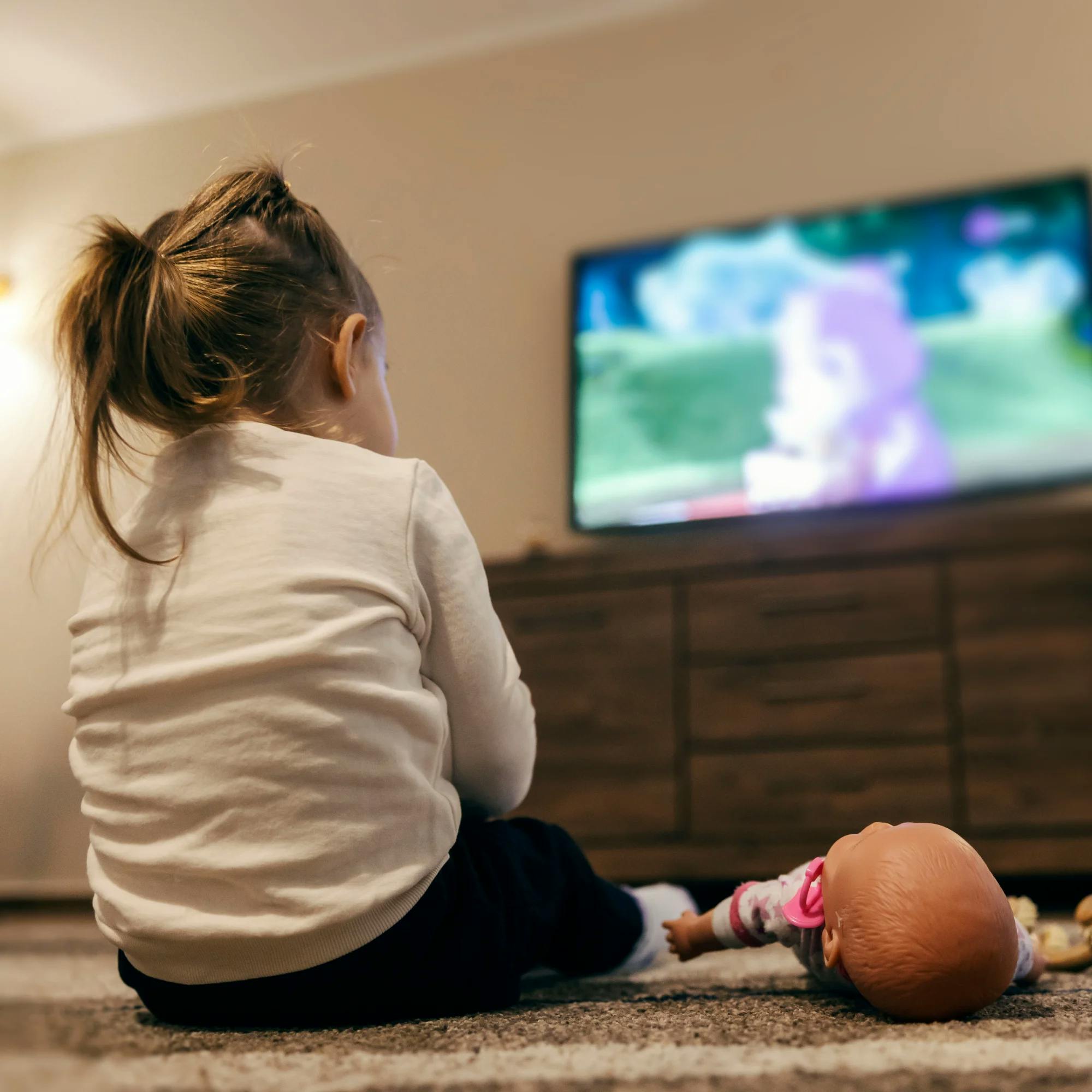We live in a world full of screens and technology. With computers, tablets, and phones everywhere, you’ve probably heard that too much screen time can affect childhood development. But how does TV factor into this? Can too much TV cause delays with speech and language?
What does the research say about TV and speech delay?
There has been a lot of research on how screen time affects children's speech and language. For example, this study assessed various types of screen use including TVs, smartphones, tablets, and video games.
The research showed that greater amounts of screen time were associated with a higher likelihood of developmental delays in communication. Take a look at the numbers:
With up to 2 hours of daily screen time at age 1, children were 61% more likely to have communication delays at age 2.
With 2 to 4 hours of daily screen time at age 1, children were twice as likely to have a communication delay at age 2.
With more than 4 hours of daily screen time, children were five times more likely to have a communication delay at age 2.
Another study showed particularly harmful effects of passive TV screen time. Researchers found that before a toddler's first birthday, those who watched more than 2 hours of TV a day were six times more likely to develop a language delay.
While we can’t say clearly that screen time causes a speech or language delay, there certainly seems to be a correlation between frequent screen use and problems with language development.
Is your child on track?
Take our free screener to learn more about your child's development and whether a speech evaluation is recommended.
 Screener for children
Screener for childrenIs it OK to have the TV on in the background?
What if your baby or toddler isn’t necessarily watching the screen, but the TV is on in the background? Simply hearing the TV can also be harmful to young children’s language development.
Researchers studied 2-year-old toddlers who were exposed to TV background noise during family meals. This background TV was consistently linked with lower language scores when they reached kindergarten age. You might think that hearing language from a TV would help a child learn new words. But in fact, background sounds can be more distracting than helpful. That’s because language learning is best when it’s done in person from human beings, not a screen. (And mealtimes are a perfect chance for this kind of human interaction to happen!)


Passive vs. active screen time: What’s the difference?
Much of this research is focused on passive screen time. Passive screen time refers to when a child is simply sitting and watching a screen, often alone. No one is talking with the child about what’s happening on the screen, or asking the child questions about what they see. There is no interaction happening.
This passive screen time is what can lead to speech delay and other language issues. Kids’ brains are growing rapidly in their first three years of life. If they aren’t regularly being mentally and socially engaged in conversation, it can lead to problems.
There is another type of screen viewing called active screen time. Active screen time is when the child is interacting and engaged in some way, preferably with an adult who’s watching with them. Think of it as the healthy part of a balanced “screen time diet.”
Active screen time encourages your child to participate and interact. Ideally, an adult is watching with them.
Active screen time encourages your child to participate and interact. It stimulates their mind and their creativity. You can make screen time active by watching a TV show with your child and commenting on what’s happening. Ask them questions about what they see, and pause the TV to discuss the show. You might ask, “How is that character feeling?” or “Tell me what just happened!” If the show has commercial breaks, that’s another good opportunity to do this.
You can also choose shows that naturally ask children questions and keep them engaged. Blue’s Clues and Dora the Explorer are two good examples. It’s still important for you to watch TV with your child and interact with them. But it helps to watch shows that ask questions related to problem solving, identifying objects, and discussing what may happen next.


Tips for cutting back on screen time
If you’re reading this and realizing that your child gets a lot of passive screen time, don’t panic! You can work on decreasing how much TV your child watches. Let’s look at some ways to do this.
First, set some ground rules. You can try setting a maximum number of minutes they can spend in front of a screen each day. Or, choose a time of day when TV is allowed (such as an hour before dinnertime), then screens off.
If your child is old enough to understand, make sure to clearly explain why you’re limiting screen time. You can also use screen time as a reward if your child does their chores, completes their homework, or spends time playing outside.
Try to replace screen time with activities your child loves. This may take a bit of trial and error, but some ideas include:
Playing outside or at the park
Reading their favorite books
Singing songs or nursery rhymes, or listening to music
Working on a craft project, like sock puppets or modeling clay
Playing with toys or board games
Cooking or baking together
For older kids, listening to a children’s podcast or audiobook
Going on play dates with friends
For most families, a totally screen-free life isn’t possible, and that’s OK! Try to interactively watch TV with your child when you can, and take steps to cut back on screens if needed. Even small changes can make a big difference.
Are you concerned about your child's speech?
If you think your child might have a speech delay, don’t hesitate to ask for help. Early intervention can make a big difference. Talk to your pediatrician, or contact Expressable to get matched with a speech therapist today.
How Expressable Can Help
Concerned your child isn't reaching age-expected milestones? Looking for communication support from a professional? Expressable is a national online speech therapy practice serving children and adults. We treat all major areas of communication and feeding, offer flexible hours including evenings and weekends, and accept most major health insurance plans. We’re proud to have earned more than 3,000 5-star reviews from our clients (4.9/5 average).
Our therapy model is centered on parent and caregiver involvement. Research proves that empowering caregivers to participate in their loved one’s therapy leads to better outcomes. That’s why we combine live, 1-on-1 speech therapy with personalized education and home practice activities for faster progress.
Communication is more than words. It’s how we share how we feel and show who we are. We’re here to help you or your child do just that.

 Abby Barnes, M.S., CCC-SLP
Abby Barnes, M.S., CCC-SLP










